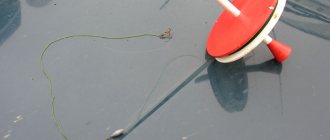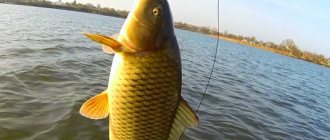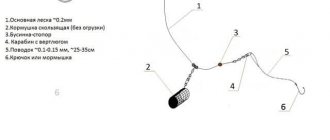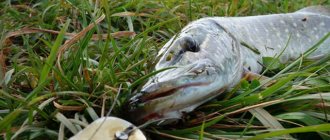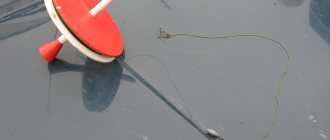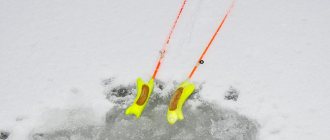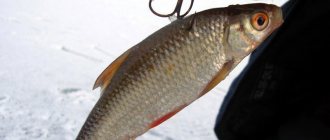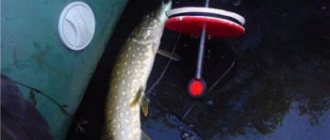At different times of the year, fishing has been and remains a favorite relaxation activity and hobby for many. At the same time, it is very important to focus on what kind of fish and in what conditions the fishing will be carried out. For example, fishing for predatory fish is very popular, since most of them are large and have a pleasant taste.
The most striking representative of predatory fish is the familiar pike, which is always not averse to profiting from something nutritious.
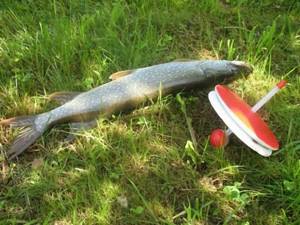
In winter, when fishing for pike, only natural food in the form of live bait works. But in the summer, artificial bait and plant food, and in some cases even bread crusts, are also suitable.

It is much more important in this matter to know what gear to use when hunting a predator. For a long time, fishing gear such as mugs has been popular among anglers.

We’ll talk about exactly how to fish with mugs and how to make them yourself.
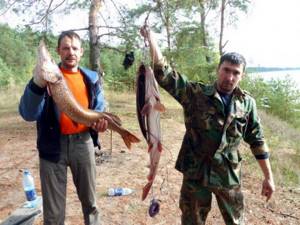
What are fishing mugs
Pike fishing mugs are a very simple device that does an excellent job both with its main task and with some additional ones.
Read here How to catch live bait: ways to quickly and easily catch good baitfish (110 photos and videos)
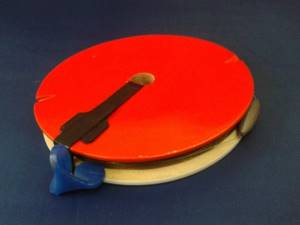
But it is also a container for storing and carrying gear in the form of fishing line, hooks and other things. In addition, the mugs are a good indicator that the bite is in progress.
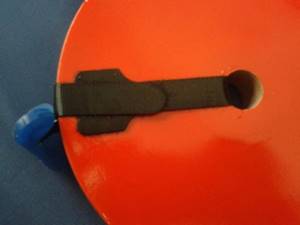
The circle is made of polystyrene foam, which floats perfectly on water. Sometimes the gear is attached to a wooden base.
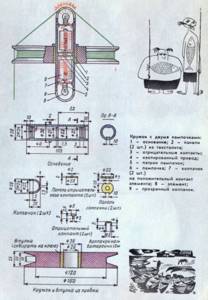
In the center of the circle there is a hole into which an axis in the form of a plastic pin is inserted. Inside there is a special slot for winding the working line, at the end of which there is equipment for fishing.
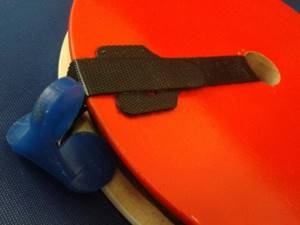
When fishing begins, the pin is inserted into the center of the circle with the spherical part on the underside. There is a hole at the top into which the fishing line is inserted. The line is lowered to the depth required with the bait already attached to the hook.
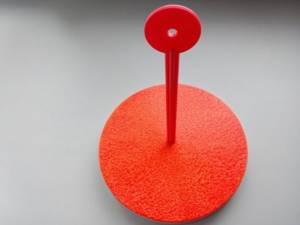
The circle looks red side up, white side down. As soon as the pike starts biting, the circle turns over, which is a signal to the angler.

Finding a predator and catching techniques
To successfully search for predatory fish, you must have a light boat with a transom, an electric motor and an echo sounder. I use an electric motor with a power of 0.5 l/s. Its power is quite enough for 3 hours of intensive search for fishing sites 5-7 km from the base. An electric motor is necessary in order not to frighten off a predator if it hunts at shallow depths, as well as for catching pike perch in the dark.
Indeed, no matter how perfect the gear, fishing with it at random is a waste of time. There are fewer and fewer predatory fish, their sites are fewer and more compact, and finding them is not at all easy. And finding a predator does not mean catching it at all.
Although the situation for the circle fisherman in the autumn fishing period is ideal. Finding a predator on an echo sounder monitor in September-October almost always means that it is active and will immediately respond to live bait thrown to the nose. The probability of catching a detected predator in the fall is approximately 60%. For comparison, the possibility of catching a predator detected by an echo sounder in the summer is slightly less than 15%.
This happens due to the fact that parking areas are often not places of active hunting. Therefore, placing circles in places where the pike perch is inactive (for example, waiting out bad weather) will not give the expected effect.
And at the same time, its absence in another promising place (a pronounced edge, a snag), where there are no large fish, but live bait is present, does not mean that it will not appear there any minute, and it will not begin to eat.
Therefore, it is more rational to place the circles, or anchor them, in promising places located nearby, that is, where it is found, and where it is not, but it can appear at any time, or to let the circles float over a large area, which includes similar places , and wait, watching them through binoculars.
When fishing in the lower reaches of the Istra Reservoir about 17 years ago, I knew exactly the minute-by-minute schedule of the predator’s movements over a large area of the reservoir. And if he did not go to the fishing square at a certain time under normal weather conditions, there was no point in waiting for him there.
The same situation occurs when catching large perch. At the moment, one can only dream about such fishing for pike perch and perch and devote one’s soul to the toothy ones, which are becoming more and more numerous in the reservoir every year. Nowadays it often occupies the well-known pike perch edges. But the discovery of a school of perch weighing 300-500 g (in the echo sounder picture they are located in the water column even in autumn) allows you to count on a catch, since the perch reacts to the bait of interest in 20-30 minutes, even during a period of low activity.
The easiest way to catch pike with mugs. In autumn, it almost always hangs in the lower layers of water next to shelter (snag, bottom break, steep ridge, drop-off), in close proximity to moving schools of small fish. The echo sounder perfectly records its location. A small snag can simultaneously contain one or several individuals of approximately the same weight and size.
A trophy specimen is almost always found alone. Usually several pikes are located 10-15 meters from a constant accumulation of roach, perch and other small fish. It is this distance that the toothy one moves to get enough. But it reacts almost immediately to a live bait thrown to the bow (the boat does not have time to move 10 m from the circle before it flips). If the mugs are launched into the water 15 m from the predator’s site, then the first bite can be expected within half an hour, but the next bite may not wait. Therefore, pike fishing is the most sporting and follows the “found-caught” scenario.
In practice, it all comes down to a continuous search and competent presentation of live bait weighing up to 100 g. When the bite is weak, the live bait is purposefully raised from the bottom by 1.5-2 m. In this case, it is more likely to fall into the field of her attention. A large pike quickly concentrates its attention on live bait playing in one place near its site or slowly moving away from it. If the circle passes through the predator’s parking area at high speed (due to strong wind), the pike does not have time to concentrate its attention on the live bait.
In the reservoirs of the Moscow region, quite often a situation arises when small pike and pike perch (weighing up to 1.5 kg) begin to actively react to live bait weighing under 100 g. If this is quite expected from a toothy one, especially in the fall, then the bloodthirstiness of a fanged one looks at least Weird. At the same time, it does not react to classic live bait weighing up to 30 g. The trouble is that there is nothing to do with conventionally designed mugs on a pond, since they are not suitable for fishing with large live bait, and, as a rule, fishermen do not have such live bait. In this case, only pinless circles with an enlarged base, which were originally conceived for pike fishing, and prepared live bait of the appropriate weight can help out.
DIY circle
It is very popular to make mugs with your own hands, since this activity is not difficult, given the design described above. Hence the question - how to make mugs for fishing with your own hands
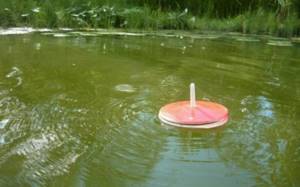
First, a circle with a thickness of about 3 centimeters is cut out of the desired material. The edges are sanded with fine sandpaper to ensure a smooth edge.
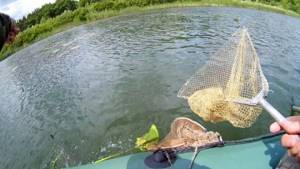
Next, use a stationery knife to cut around the circumference the place for winding the fishing line and also process it with sandpaper. The place for attaching the pin axis is drilled using a drill. Next, paint both sides of the circle with thin layers of white and red paint.
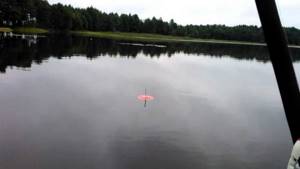
Note!
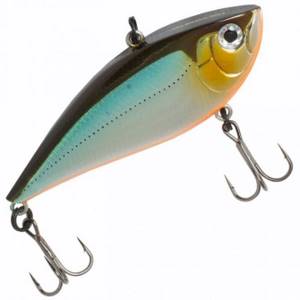
Fishing with rattlin - features and secrets of using bait. 100 photos and videos of the correct fishing technique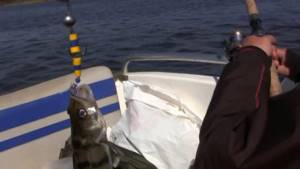
Fishing with a mandula: technique and features of catching predators. Nuances and important features of fishing (105 photos)

Making flies with your own hands - how to do it quickly and easily? Making master class and advice for beginning fishermen (115 photos)
It is better to use polystyrene foam as the material for the mug, since wood swells quickly. And for the pin, non-sinking plastic is used.
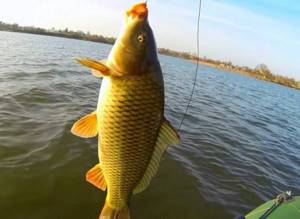
A polystyrene foam ball is placed on the tip of the pin and painted red.
Don't forget to make a hole at the opposite end of the axle. This way it becomes clear how to make mugs for fishing.
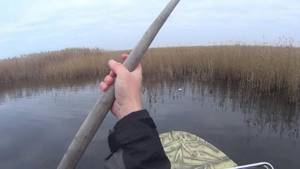
How to anchor a circle?
To do this, the main equipment is often placed on a small foam reel, onto which the required amount of fishing line is wound. The reel is connected with a cord to a circle, which is the base buoy, and the cord goes from it to the bottom, where the anchor-weight lies. There is a slot on the reel. When a predator grabs the bait, the line slips out of the slot and begins to unwind. At this time, the predator swallows the live bait. When the supply of fishing line runs out, the force is transferred to the circle, and it turns over, showing a white “belly”. Also, when turning over, the grip of a predator is determined in a classic circle. Since white color is more visible on dark morning water than red, the circle is usually in operating mode with the red side up. The circle is often replaced with a foam reel. And if the tackle is anchored, it looks like two reels, one larger, the other smaller.
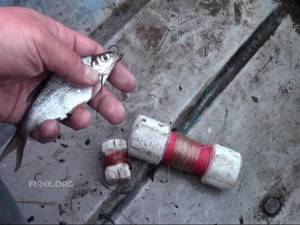
In the current and under the influence of wind, the anchored circle, when using two floating elements, operates normally and the live bait does not get caught in the anchor cord. But in calm conditions and in a limited window space among water lilies, it is better to use a circle, where the anchor cord moves the dry rod floating on top away from the circle. Such gear can be used on a forest lake overgrown with grass, where neither a spinning rod nor running circles can catch a predator, and the depth is too great for flyer baits.
Photos of fishing with mugs
Note!

Bloodworms for fishing - secrets and tricks on how to properly obtain, store and attach for catching various types of fish (125 photos + video)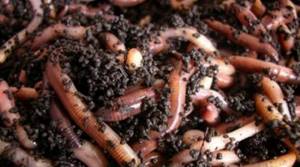
Dung worm - methods of extraction and secrets of catching. How to properly prepare and breed at home (100 photos and videos)

Peas for fishing - methods of preparation, catching, baiting and feeding fish (video + 125 photos)
Help the project, share on social networks 

0
What kind of predator can you catch with a circle?
The most common catch of mug anglers is pike. It is caught both in large reservoirs and in lakes and ponds. On small rivers they usually place fixed mugs at anchor.
In deep reservoirs, it is often very successful to catch pike perch using circles, especially if the gear moves along the edge, which may be the bed of a flooded river and its banks. The main thing before fishing is to study the day's topography in the chosen place (about catching pike perch with a bait donkey or a bottle).
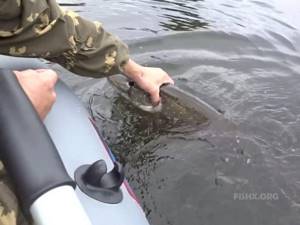
Mugs and their analogues - postavukhi - are used even in catching large carp, which sometimes cannot be caught with any tackle where a fishing rod is used. It will break. Therefore, the mugs are placed on a not very heavy anchor-weight and they wait for the carp to take and then drag the circle wherever their eyes look. Only when the fish gets tired do they take it off the hook.
Fishing in different seasons
Fishing in spring
Spring spawning of pike begins during high water, when the water does not even reach 10 degrees Celsius. It lasts two weeks; all this time and until warming, the pike stays in spawning areas. As a rule, these are snags and cluttered places with shallow depth. During the spring feeding period and spawning, pike will take live bait regardless of the weather.
In summer
As the weather gets warmer, pike go hunting in grassy backwaters, where fry of various fish breeds grow in warm, stagnant water. It is quite easy to determine whether a toothy one is in place - here and there you can hear the blows of a pike tail on the water and splashes of schools of scattering fry. This is where a circle disguised as a water lily comes in handy. Summer is also the period for pike fishing on stretches and in deep holes.
in autumn
As the water cools, pikes begin their pre-winter gluttons. In the fall, they set up ambushes under snags and in holes, and, as the fish go to the bottom, they take more and more actively. Weather conditions and atmospheric pressure during this period play a significant role in capturing the predator.
For carp
This fish cares little about the quality of food, since it is content with everything it comes across. Carp are very cautious and timid, and they are also extremely suspicious of any noise. In order for the fishing of this fish to be successful, the fisherman needs to use special, “cunning” tackle. And that’s exactly what the circle is. It is very helpful when fishing for predatory fish, such as pike or catfish. But specifically in the case of carp, this tackle provides a rich catch.
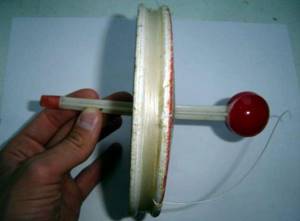
The angler will be helped primarily by its noiselessness. With such gear, such shy prey will not notice the hunter in any way, and therefore, the fish has no reason to refuse the pleasure of trying the bait. Fishing for carp with a circle is also good because this shy fish does not notice or hear the angler, since the casting is almost silent.
Tackle
Again, the main advantage of this type of rig is its noiselessness, which makes carp mugs an ideal rig for fishing at different times of the year. They work especially well in warm weather, when the fish heightens its sense of fear.
The main components of the equipment are a long antenna with a cut for fishing line, as well as a round disk. To make a disk, you can use any material with positive buoyancy; foam, wood or plastic are excellent for this purpose. If you make a disk yourself, make sure that its diameter is about 10 centimeters and its width is about 2. Also, to wind the fishing line, there must be a groove in its edge.
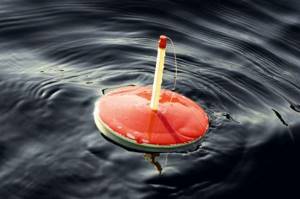
Catching carp with mugs involves similarity of gear with objects familiar to fish, so it is recommended to paint the lower part of the mug in more natural tones. Coloring the circle to match the color of aquatic vegetation allows you to maximize your chances of catching. For the convenience of the fisherman, you can paint the upper part of the tackle in a bright color so that you can clearly see the bite.
It is best to use a fishing line approximately 0.35 mm in diameter; I advise you to avoid braided line. But a half-meter braided leash with a diameter of up to 0.2 mm will not hurt. It is best to mount the leash on the fishing line using a small carabiner.
The next step is to install the sinker on a sliding mount, usually the weight of the weight is about 30 grams and it is attached between the leash and the main fishing line. Very important: install no more than two hooks on the tackle, otherwise tangling will be inevitable.
The signal to hook is a revolution and rotation of the circle.
How to catch a pike
Pike fishing begins immediately after the end of the spawning ban. To find promising areas for toothfish fishing, it is necessary to identify places where small fish accumulate.
- At the end of spring and beginning of summer, water meadows will be such interesting points.
- In June and July, pike hunt at the edge of aquatic vegetation, as well as in windows of reeds or water lilies.
- From late summer to late autumn, the toothy predator lies in wait for prey on riverbed edges and near pits.
Before you send your mugs on a long voyage, you should get acquainted with the topography of the reservoir. If you have a boat, this will not be difficult. It is useful to have with you a simple depth gauge made from a cork, a piece of fishing line and a weight. The circle is installed as follows. First, the depth gauge is attached to the hook by the cork part, after which the equipment is sent to the bottom. Then the fishing line should be pulled to such an extent until the load begins to come off the bottom. Another 20-40 cm is wound around the circle, in this position the main fishing line is fixed on the notches and groove of the pin. The equipment is removed from the water, and instead of a depth gauge, live bait is attached to the hook. The fish carefully lowers to the measured depth, and the circle remains on the water. According to this scheme, a battery of circles is installed with a number that fits into the fishing rules (5-10 pieces).
Choosing a fishing spot
Considering the specifics of our gear, choosing a fishing location is a separate issue. Ideally, catch carp with mugs in reservoirs sheltered from the wind, without current, in calm weather. But in principle it is possible anywhere where carp are found.
Depending on the temperature, light level, and amount of oxygen, it changes its location. This is where our tackle comes in handy; it can be installed anywhere in the pond.
Install them where the fish may be located:
- next to the reed thickets,
- close to the snag,
- eyebrows,
- areas with differences in depth,
- bushes overhanging the water
- deep-sea pools.
In hot weather, look for shaded areas among the bushes. This is where the carp spends most of its time.
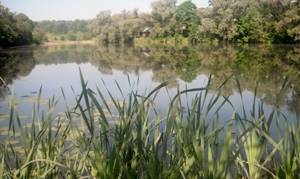
At great depths you can catch a large trophy.
